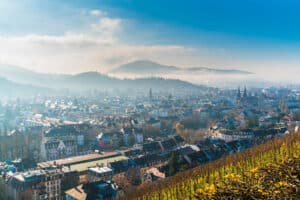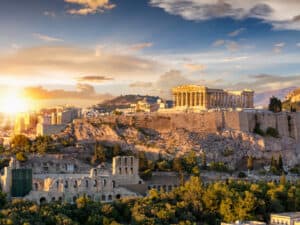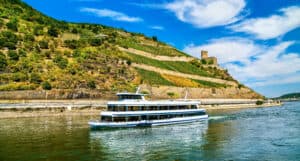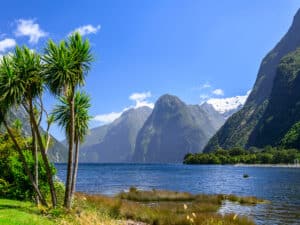Welcome to our ultimate Iguazu Falls travel guide! We’ll help you plan your trip to one of the most spectacular natural wonders in the world, nestled between Argentina and Brazil. From Buenos Aires to Iguazu Falls, we’ll cover everything you need to know, including Iguazu Falls hotels, facts, history, and activities.
Contents
Facts
Iguazu Falls is a breathtaking natural wonder situated on the border between Argentina and Brazil. With a total of 275 individual waterfalls, it spans nearly 3 kilometers in width and plunges an impressive 80 meters at its highest point. This awe-inspiring cascade has been named one of the New Seven Wonders of Nature and is a UNESCO World Heritage site.

History and Location
Iguazu Falls is a majestic natural wonder that has captivated human imagination for centuries. To better understand its significance and unique location, let’s delve deeper into its history and geographical relation to Argentina and Brazil.
Historical Background
The Iguazu Falls have long been a part of the region’s indigenous history. The name “Iguazu” is derived from the Guarani words “y” (water) and “ûasú” (big), reflecting the sheer scale and power of these cascades. Local Guarani legend speaks of a deity who intended to marry a beautiful mortal woman named Naipí. However, she eloped with her lover, Tarobá, in a canoe. In a fit of rage, the deity sliced the Iguazu River, creating the falls and trapping Naipí and Tarobá in an eternal descent.
The first recorded European to encounter Iguazu Falls was Spanish explorer Álvar Núñez Cabeza de Vaca in 1541. He named them “Saltos de Santa María,” but the indigenous name “Iguazu” persisted. Over the centuries, the falls gained international recognition and attracted increasing numbers of visitors, leading to the eventual establishment of national parks on both the Argentine and Brazilian sides in the early 20th century. In 1984, Iguazú National Park in Argentina was declared a UNESCO World Heritage site, followed by Iguaçu National Park in Brazil in 1986.
Between Argentina and Brazil
Iguazu Falls is situated on the border between Argentina and Brazil, within the Argentine province of Misiones and the Brazilian state of Paraná. The falls are part of the Iguazu River, which originates in the Brazilian state of Santa Catarina and flows westward for approximately 1,320 kilometers before merging with the Paraná River.
The Iguazu River forms a natural border between Argentina and Brazil, with approximately 80% of the falls located in Argentina and the remaining 20% in Brazil. This unique geographical location offers visitors the opportunity to experience the falls from both countries, each providing distinct perspectives and attractions.
On the Argentine side, the town of Puerto Iguazú serves as the gateway to Iguazú National Park and is the primary base for exploring the falls. The park features an extensive network of walkways and trails that allow visitors to get up close to the cascades and immerse themselves in the surrounding subtropical rainforest.
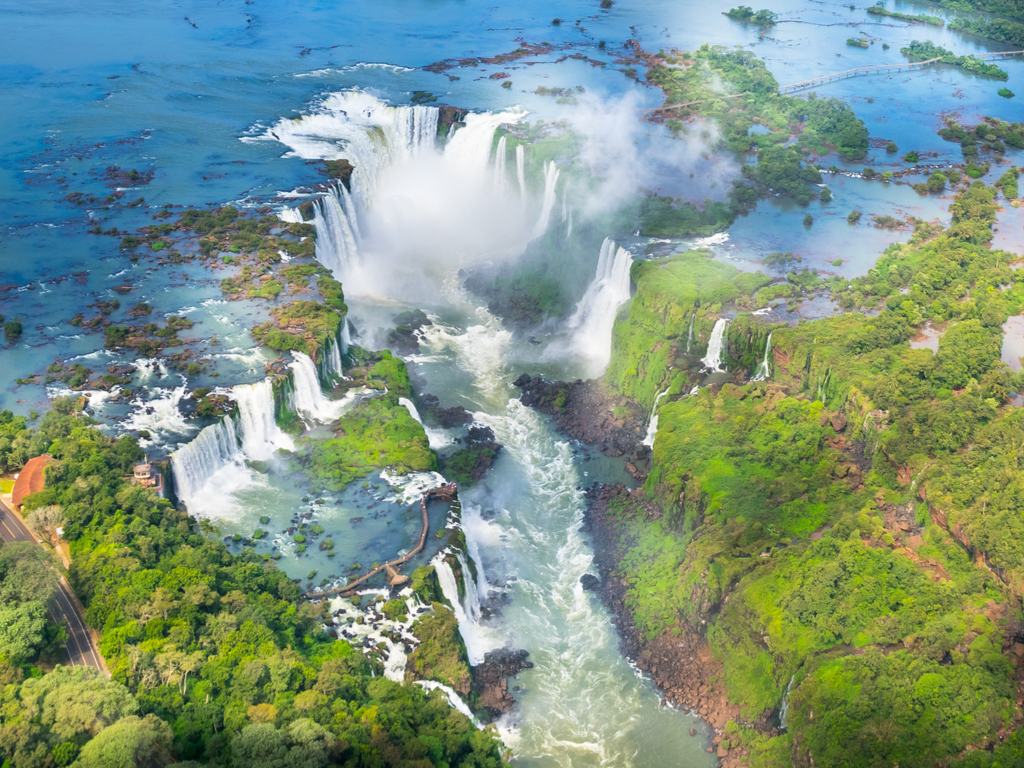
The Brazilian side offers access to Iguaçu National Park from the city of Foz do Iguaçu. While the Brazilian side has fewer trails, it provides a more panoramic view of the falls, showcasing the impressive scale and beauty of this natural wonder. The iconic Devil’s Throat, the most powerful section of Iguazu Falls, can be appreciated from both sides, but the walkway and viewing platform on the Argentine side offer a closer vantage point.
In summary, the rich history and unique location of Iguazu Falls on the border of Argentina and Brazil create a diverse and unforgettable experience for visitors. By exploring both the Argentine and Brazilian sides of the falls, travelers can fully appreciate the breathtaking beauty and fascinating history of this extraordinary natural wonder.
Things to See and Do
The Iguazu Falls region offers numerous exciting activities and attractions, ensuring an unforgettable experience for visitors. Here are more detailed descriptions of some must-see sights and adventures:
Tour the National Parks
Visiting both the Argentinean (Iguazú National Park) and Brazilian (Iguaçu National Park) sides of the falls is highly recommended. Each park offers different viewpoints and experiences. The Argentine side features walking trails that take you up close to the falls, while the Brazilian side offers panoramic views. Both parks have a variety of flora and fauna, providing opportunities for wildlife spotting.
Devil’s Throat
The most powerful and majestic section of Iguazu Falls, the Devil’s Throat (Garganta del Diablo), is accessible from the Argentine side. A walkway takes visitors across the river to a platform overlooking the massive U-shaped cascade. The thunderous roar of the water and the misty atmosphere create a mesmerizing experience.
Boat Tours
Embark on an exhilarating boat ride to get as close as possible to the falls. Several tour operators offer boat trips that take you right up to the base of the cascades, ensuring an adrenaline-pumping adventure. Prepare to get soaked as you marvel at the power and beauty of the waterfalls.
Helicopter Ride
For an unforgettable aerial view of Iguazu Falls, consider taking a helicopter tour. The flight offers a unique perspective of the falls’ size and scale, and the stunning surrounding landscape. Helicopter tours typically last around 10 minutes and are available on the Brazilian side of the falls.
Bird Park (Parque das Aves)
Located near the entrance of Iguaçu National Park on the Brazilian side, this impressive bird park features over 150 species of birds, both native and exotic. Wander through lush, immersive aviaries and observe colorful toucans, parrots, and flamingos up close. The park also has a butterfly garden and a reptile enclosure, making it a perfect family-friendly activity.
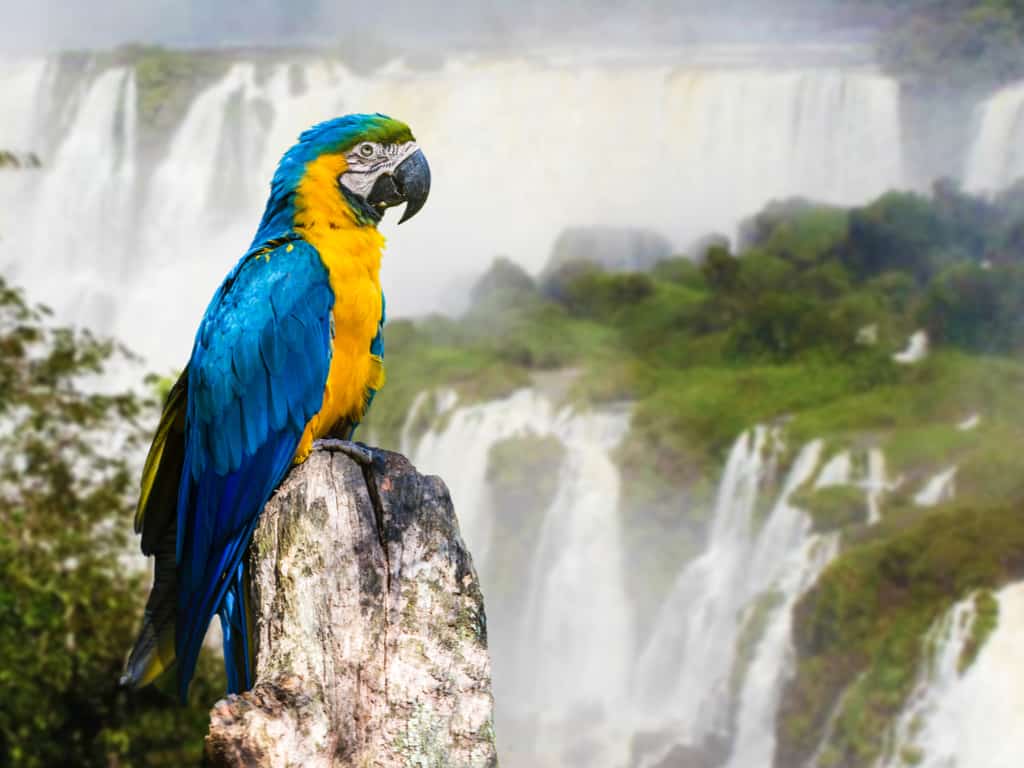
Sendero Macuco Trail
For nature lovers and adventure seekers, the Macuco Trail on the Argentine side offers a chance to hike through the lush rainforest surrounding the falls. The 7-kilometer round-trip trail takes you to the secluded Arrechea Waterfall, where you can enjoy a refreshing swim.
Itaipu Dam
A short distance from Foz do Iguaçu on the Brazilian side, the Itaipu Dam is an engineering marvel and one of the largest hydroelectric power plants in the world. Guided tours of the dam offer insights into its construction and functioning, as well as panoramic views of the Parana River.
Three Borders Landmark
The Hito Tres Fronteras is a unique attraction marking the point where Argentina, Brazil, and Paraguay meet. Located in Puerto Iguazú, Argentina, and Foz do Iguaçu, Brazil, the landmarks on each side of the river provide excellent photo opportunities and views of the three countries.
With so many thrilling and diverse activities to enjoy at Iguazu Falls, your trip is sure to be packed with unforgettable experiences that you’ll treasure for years to come.
Typical Costs
Travelers can expect a range of costs depending on their desired level of comfort and experience at Iguazu Falls. To help you plan your trip, here’s a breakdown of typical expenses for budget, mid-range, and luxury travelers:
| Budget | Mid-Range | Luxury | |
|---|---|---|---|
| Hotels | $10 – $30 | $50 – $150 | $200 – $500 |
| Meals | $5 – $10 | $10 – $25 | $30 – $80 |
| Tours | $20 – $60 | $60 – $100 | $100 – $300 |
| Transport | $1 – $5 | $5 – $15 | $20 – $50 |
Please note that these costs are per person and per day.
National Park Entrance Fees: The entrance fees for the national parks vary depending on the side of the falls you visit. The fee for Iguazú National Park (Argentina) is around $25 for foreigners, while the entrance fee for Iguaçu National Park (Brazil) is approximately $30. These fees grant access to the park’s trails, viewpoints, and facilities for the entire day.
Boat Tours: One of the most popular activities at Iguazu Falls is taking a boat tour to the base of the cascades. Boat tours can be found at various price points depending on the length and type of experience. Budget travelers can find shorter tours for around $20, while mid-range options, which may include additional activities like hiking or wildlife spotting, can cost between $60 and $100. Luxury boat tours, which might feature a private guide or exclusive access, can range from $100 to $300.
These typical costs should help you plan your trip to Iguazu Falls according to your preferred travel style and budget. By considering the costs of accommodations, meals, tours, and transportation, you can create a customized experience that suits your needs and allows you to fully enjoy this incredible natural wonder.
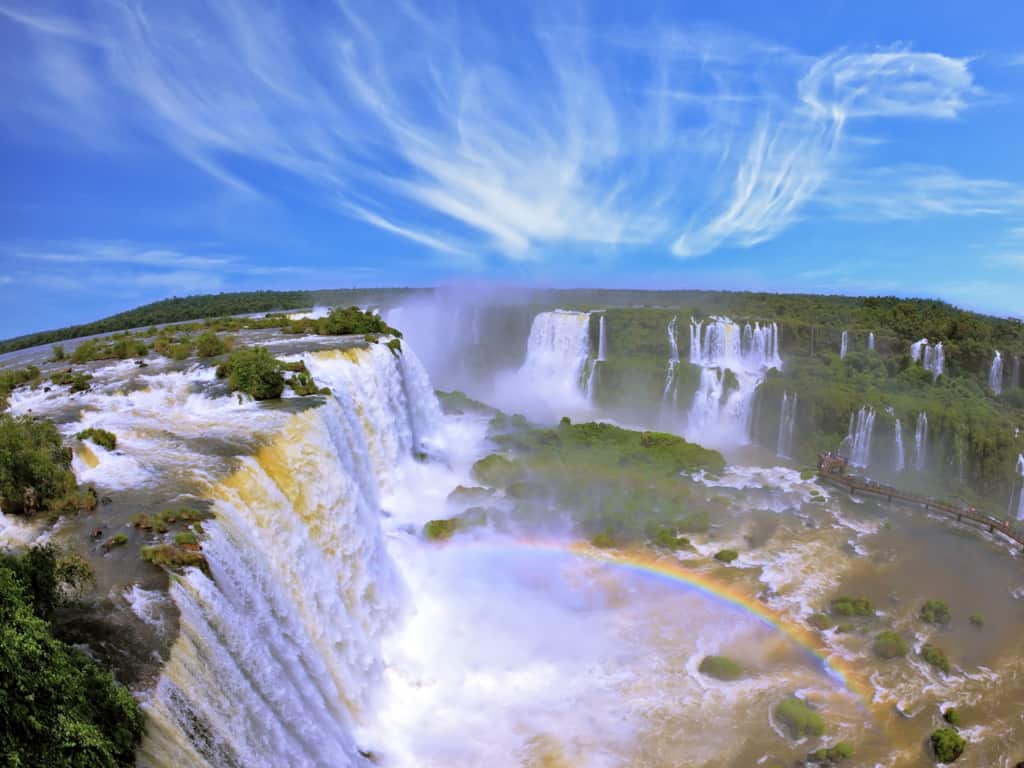
Money-Saving Tips
Visiting Iguazu Falls on a budget is entirely possible, and with a few smart choices and strategies, you can make the most of your trip without breaking the bank. Here are some detailed money-saving tips to help you enjoy your Iguazu Falls adventure:
- Travel during the off-season: Visiting Iguazu Falls between May and September can result in significant savings on accommodations and attractions. Hotels tend to lower their rates during this period due to reduced demand, and you may also find discounted prices on tours and activities.
- Book accommodations in advance: Plan and book your accommodations well in advance to secure the best deals. Look for promotions, discounts, or package deals that include meals or activities, and consider staying in a hostel or guesthouse if you’re on a tight budget.
- Use public transportation: Both the Argentine and Brazilian sides offer affordable and convenient public transportation options, including buses that connect the major attractions, towns, and hotels. Using public transportation can save you a significant amount compared to taxis or private transfers.
- Eat like a local: Instead of dining at tourist-oriented restaurants, explore local eateries and street food vendors for more affordable meal options. Empanadas, choripán (sausage sandwiches), and other local dishes are not only delicious but also budget-friendly.
- Pack a picnic: Save on meals by shopping at local markets or grocery stores and preparing your own food. Packing a picnic to enjoy at the falls can be both cost-effective and memorable.
- Take advantage of free attractions: While some activities and tours at Iguazu Falls can be pricey, there are also plenty of free attractions to enjoy. Take advantage of the extensive network of trails and viewpoints in the national parks, and explore the surrounding rainforest to spot wildlife and immerse yourself in the natural beauty of the area.
- Skip the guided tours: Although guided tours can provide valuable insights and information, they can also be expensive. Save money by exploring the falls independently and using the abundant signage, maps, and information provided by the national parks.
- Travel with a group: If you’re planning on taking tours or participating in activities that charge per group, consider traveling with friends or family to split the costs. Additionally, group discounts are often available for accommodations, transportation, and attractions.
By following these money-saving tips, you can enjoy an incredible trip to Iguazu Falls without overspending. With careful planning and smart choices, you can fully experience the breathtaking beauty and excitement of this natural wonder on a budget.
How to Get Around
Navigating the Iguazu Falls area can be relatively easy and affordable, whether you’re exploring the Argentine or Brazilian side. Here are some detailed tips and options for getting around during your visit:
Argentina
- Public Buses: Puerto Iguazú, the main town on the Argentine side, has a reliable public bus system that connects the town with Iguazú National Park and other local attractions. Buses to the national park run frequently throughout the day and are an affordable option, costing around $1 to $2 each way. The trip takes approximately 30 minutes.
- Taxis or Remises: Taxis and remises (private car services) are available in Puerto Iguazú for a more comfortable and convenient mode of transportation. While these options are more expensive than public buses, they can be a good choice if you’re short on time or traveling with a group. Be sure to negotiate the fare beforehand or ask your hotel to arrange a fixed-price remis service.
- Car Rental: Renting a car in Puerto Iguazú can provide greater flexibility and freedom to explore the area at your own pace. However, driving in the region may be challenging due to local traffic conditions and unfamiliar roads. Additionally, renting a car can be more expensive than using public transportation or taxis.
- Bicycles or Scooters: If you’re up for an adventure, renting a bicycle or scooter can be an enjoyable and eco-friendly way to get around. Many hotels and rental shops in Puerto Iguazú offer bikes and scooters for daily or hourly rates.
Brazil
- Public Buses: Foz do Iguaçu, the main city on the Brazilian side, also has an efficient public bus system connecting the city with Iguaçu National Park and other attractions. Buses run regularly throughout the day, with a one-way fare costing around $1 to $2. The journey to the national park takes approximately 40 minutes.
- Taxis or Ride-Sharing Services: Taxis and ride-sharing services like Uber are available in Foz do Iguaçu, offering a convenient and comfortable way to get around. While more expensive than public buses, these options can save time and provide door-to-door service. Remember to agree on a fare with the taxi driver in advance or use a ride-sharing app to get an estimated price.
- Car Rental: Renting a car in Foz do Iguaçu can offer the flexibility to explore the region at your leisure. However, as with the Argentine side, driving can be challenging for those unfamiliar with local roads and traffic conditions. Weigh the costs and benefits before deciding on this option.
- Organized Tours: If you prefer a hassle-free experience, consider booking an organized tour that includes transportation to and from the national park, as well as visits to other local attractions. While this option may be more expensive, it can save you time and effort by handling all the logistics and providing a knowledgeable guide.
In summary, there are various transportation options to suit different preferences and budgets when exploring the Iguazu Falls area. Whether you choose public transportation, taxis, car rental, or organized tours, planning your transportation in advance can ensure a smooth and enjoyable experience during your visit.
When to Go to Iguazu Falls
The best time to visit Iguazu Falls depends on your preferences for weather, crowd levels, and available activities. Here’s a table outlining the advantages and disadvantages of visiting during different times of the year:
The best time to visit Iguazu Falls depends on your preferences for weather, crowd levels, and available activities. Here’s a table outlining the advantages and disadvantages of visiting during different times of the year:
| Time of Year | Weather Conditions | Crowd Levels | Activities and Events |
|---|---|---|---|
| High Season (Dec-Feb) | Hot and humid (30°C/86°F) | High | Ideal for water activities, lush green scenery |
| Shoulder Season (Mar-May, Sep-Nov) | Mild and comfortable (20-25°C/68-77°F) | Moderate | Good balance of weather and crowd levels |
| Low Season (Jun-Aug) | Cooler and drier (15-20°C/59-68°F) | Low | Lower prices, fewer tourists, less humidity |
High Season
The summer months in South America bring hot and humid conditions to the Iguazu Falls region. This is the peak tourist season, so expect larger crowds and higher prices for accommodations and attractions. The high water levels during this period make it an excellent time for water-based activities, such as boat tours and swimming. The rainforest is also particularly lush and vibrant, enhancing the overall experience.
Shoulder Season
The shoulder season offers a balance between the extreme weather conditions of the high and low seasons, with mild and comfortable temperatures. While there may still be occasional rainfall, the reduced humidity makes exploring the falls and surrounding rainforest more enjoyable. Crowd levels are moderate during this period, allowing for a more relaxed experience. This is a great time to visit if you’re looking for pleasant weather and fewer tourists without sacrificing the beauty and excitement of the falls.
By understanding the advantages and disadvantages of visiting Iguazu Falls during different times of the year, you can choose the best period for your preferences and interests. Whether you prefer the lush scenery and water activities of the high season, the milder weather and moderate crowds of the shoulder season, or the cooler temperatures and lower prices of the low season, Iguazu Falls offers a unique and unforgettable experience year-round.
How to Get to Iguazu Falls
Reaching Iguazu Falls requires a bit of planning, but with a variety of transportation options available, it’s relatively easy to access this incredible natural wonder. Here’s a detailed guide on how to get to Iguazu Falls from different starting points:
From Buenos Aires – Argentina
- By Air: The quickest and most convenient way to travel from Buenos Aires to Iguazu Falls is by air. Numerous daily flights connect Buenos Aires’ Aeroparque Jorge Newbery (AEP) and Ezeiza International Airport (EZE) with Cataratas del Iguazú International Airport (IGR) in Puerto Iguazú. The flight duration is approximately 1 hour and 50 minutes, and airlines such as Aerolíneas Argentinas, LATAM, and Flybondi offer services on this route. Keep an eye out for promotions and discounts to find the best deals on airfares.
- By Bus: Long-distance buses provide a more budget-friendly option for travelers who don’t mind a longer journey. Bus companies like Crucero del Norte, Via Bariloche, and Rio Uruguay operate comfortable and well-equipped buses from Buenos Aires’ Retiro Bus Terminal to Puerto Iguazú. The bus journey can take between 18 and 24 hours, with ticket prices varying depending on the level of service and amenities offered.
From Rio de Janeiro or São Paulo – Brazil
- By Air: Flying is the most convenient option for travelers coming from Rio de Janeiro or São Paulo. Daily flights connect Rio de Janeiro/Galeão–Antonio Carlos Jobim International Airport (GIG) and São Paulo/Guarulhos–Governador André Franco Montoro International Airport (GRU) with Foz do Iguaçu/Cataratas International Airport (IGU) in Foz do Iguaçu. The flight duration is approximately 2 hours from Rio de Janeiro and 1 hour and 45 minutes from São Paulo. Airlines such as LATAM, GOL, and Azul operate on these routes. Be sure to check for promotions and discounts when booking your flights.
- By Bus: Travelers on a budget can opt for long-distance buses from Rio de Janeiro or São Paulo to Foz do Iguaçu. Bus companies like Pluma, Catarinense, and Expresso do Sul offer services on these routes. The journey from Rio de Janeiro takes around 24 hours, while the trip from São Paulo takes approximately 16 hours. Bus fares vary depending on the level of comfort and amenities provided.
From Other Cities and Countries
- Connecting Flights: If you’re traveling from other cities or countries, you’ll likely need to book a connecting flight through a major hub such as Buenos Aires, Rio de Janeiro, or São Paulo. From there, follow the instructions above to reach Iguazu Falls by air or bus.
- Border Crossings: If you’re traveling overland from neighboring countries like Paraguay or Uruguay, you may need to cross the border into Argentina or Brazil. Ensure that you have a valid passport and any required visas for entry. Border crossings can be made by bus or private vehicle, but always research the specific requirements and regulations for each crossing point.
By planning your journey in advance and considering factors such as time, budget, and convenience, you can choose the best mode of transportation for your trip to this spectacular natural wonder.
How to Stay Safe
While Iguazu Falls is generally a safe destination for travelers, it’s essential to take some precautions to ensure a worry-free and enjoyable visit. Here are some detailed tips on staying safe during your trip:
- Follow Park Rules and Guidelines: Both the Argentine and Brazilian sides of the falls are protected within national parks, which have specific rules and guidelines for visitors. Stay on designated trails, respect wildlife, and follow any posted signs or instructions from park rangers. Adhering to these guidelines will help protect both the environment and your safety.
- Be Mindful of Slippery Surfaces: The areas surrounding the falls can be wet and slippery due to mist and rainfall. Wear sturdy, non-slip shoes, and watch your footing while walking on trails, stairs, and viewing platforms.
- Stay Hydrated and Use Sun Protection: The climate in the Iguazu Falls region can be hot and humid, making it essential to stay hydrated and protect yourself from the sun. Carry a reusable water bottle, wear sunscreen with a high SPF, and consider wearing a hat or sunglasses for added protection.
- Secure Your Belongings: As with any popular tourist destination, pickpocketing and theft can occur. Keep your belongings secure by using a money belt or neck pouch for important items like passports, money, and credit cards. Don’t leave your bags unattended, and consider using a lock for your luggage when staying in hotels or hostels.
- Use Reputable Transportation Providers: When arranging transportation, such as taxis, buses, or car rentals, opt for reputable companies recommended by your hotel or other travelers. This will help ensure your safety and minimize the risk of scams or overcharging.
- Be Cautious with Wildlife: The Iguazu Falls region is home to diverse wildlife, including coatis, monkeys, and various bird species. While these animals may appear cute and friendly, it’s essential to remember that they are wild and can be unpredictable. Maintain a safe distance, avoid feeding them, and never attempt to touch or approach them.
- Purchase Travel Insurance: It’s always a good idea to have travel insurance in case of accidents, illness, or other unforeseen events. Ensure that your policy covers medical treatment, emergency evacuation, and any adventure activities you plan to participate in, such as boat tours or hiking.
- Stay Informed About Local Conditions: Keep up-to-date with local news and weather reports, particularly during the rainy season, when flash floods or landslides may occur. Be prepared to adjust your plans if necessary, and follow the advice of local authorities.
- Respect Local Customs and Laws: Be aware of local customs and laws to avoid inadvertently causing offense or getting into trouble. This includes dress codes, alcohol consumption, and behavior in public places. Familiarize yourself with local etiquette and respect the local culture.
By following these safety tips and staying aware of your surroundings, you can minimize potential risks and enjoy a memorable and stress-free visit to Iguazu Falls.


